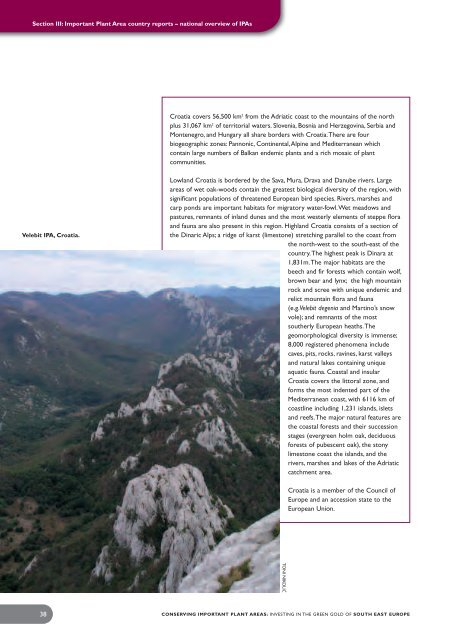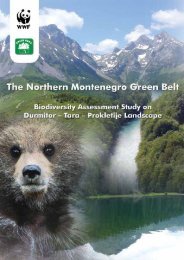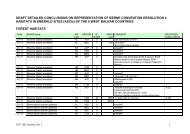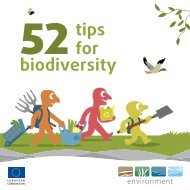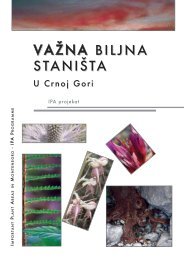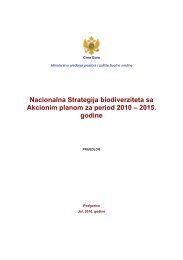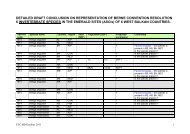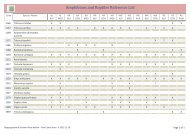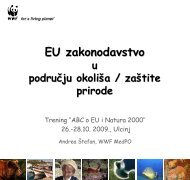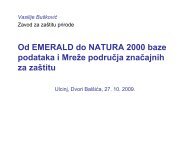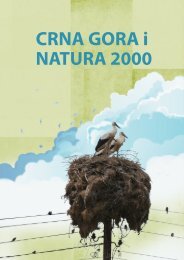conserving important plant areas: investing - Plantlife
conserving important plant areas: investing - Plantlife
conserving important plant areas: investing - Plantlife
Create successful ePaper yourself
Turn your PDF publications into a flip-book with our unique Google optimized e-Paper software.
Section III: Important Plant Area country reports – national overview of IPAs<br />
Velebit IPA, Croatia.<br />
38<br />
Croatia covers 56,500 km 2 from the Adriatic coast to the mountains of the north<br />
plus 31,067 km 2 of territorial waters. Slovenia, Bosnia and Herzegovina, Serbia and<br />
Montenegro, and Hungary all share borders with Croatia.There are four<br />
biogeographic zones: Pannonic, Continental,Alpine and Mediterranean which<br />
contain large numbers of Balkan endemic <strong>plant</strong>s and a rich mosaic of <strong>plant</strong><br />
communities.<br />
Lowland Croatia is bordered by the Sava, Mura, Drava and Danube rivers. Large<br />
<strong>areas</strong> of wet oak-woods contain the greatest biological diversity of the region, with<br />
significant populations of threatened European bird species. Rivers, marshes and<br />
carp ponds are <strong>important</strong> habitats for migratory water-fowl.Wet meadows and<br />
pastures, remnants of inland dunes and the most westerly elements of steppe flora<br />
and fauna are also present in this region. Highland Croatia consists of a section of<br />
the Dinaric Alps; a ridge of karst (limestone) stretching parallel to the coast from<br />
the north-west to the south-east of the<br />
country.The highest peak is Dinara at<br />
1,831m.The major habitats are the<br />
beech and fir forests which contain wolf,<br />
brown bear and lynx; the high mountain<br />
rock and scree with unique endemic and<br />
relict mountain flora and fauna<br />
(e.g.Velebit degenia and Martino’s snow<br />
vole); and remnants of the most<br />
southerly European heaths.The<br />
geomorphological diversity is immense;<br />
8,000 registered phenomena include<br />
caves, pits, rocks, ravines, karst valleys<br />
and natural lakes containing unique<br />
aquatic fauna. Coastal and insular<br />
Croatia covers the littoral zone, and<br />
forms the most indented part of the<br />
Mediterranean coast, with 6116 km of<br />
coastline including 1,231 islands, islets<br />
and reefs.The major natural features are<br />
the coastal forests and their succession<br />
stages (evergreen holm oak, deciduous<br />
forests of pubescent oak), the stony<br />
limestone coast the islands, and the<br />
rivers, marshes and lakes of the Adriatic<br />
catchment area.<br />
TONI NIKOLIĆ<br />
Croatia is a member of the Council of<br />
Europe and an accession state to the<br />
European Union.<br />
CONSERVING IMPORTANT PLANT AREAS: INVESTING IN THE GREEN GOLD OF SOUTH EAST EUROPE


